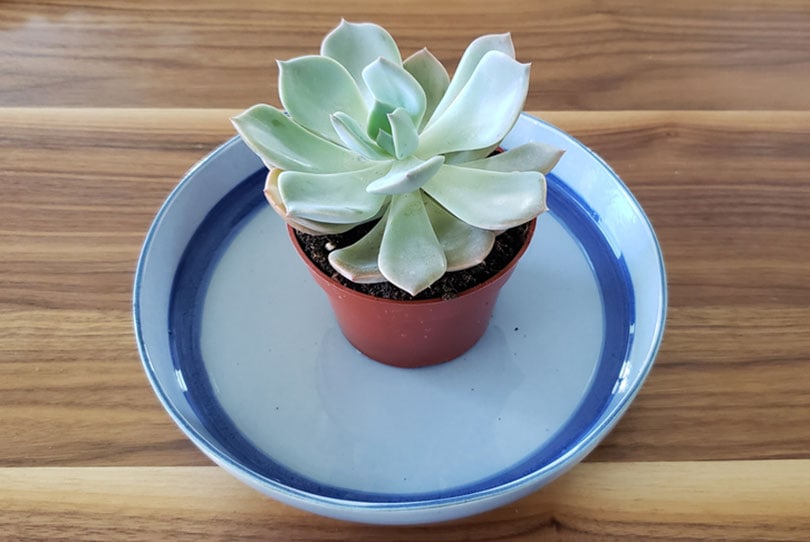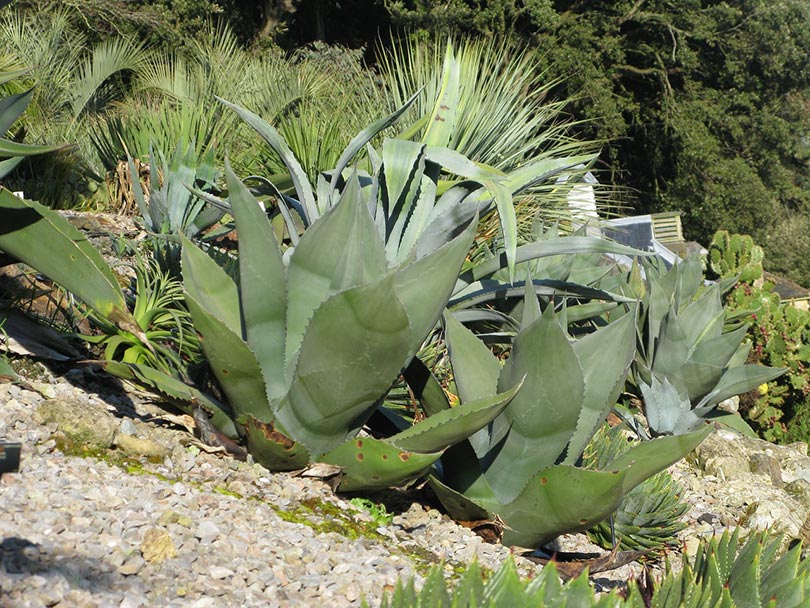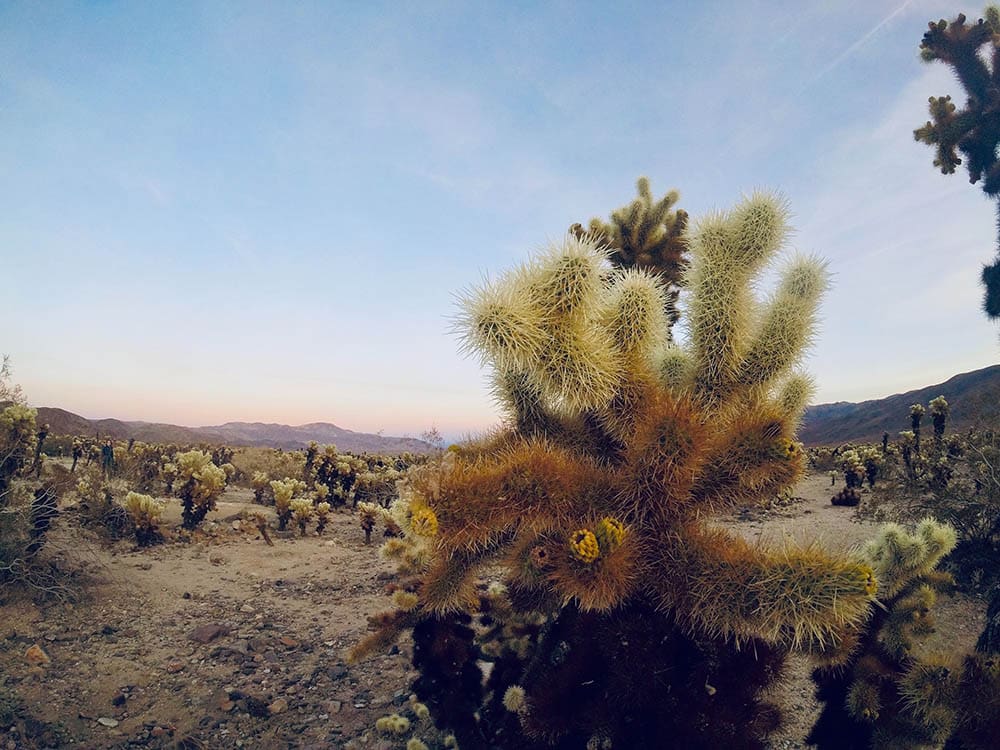Is a Cactus a Succulent? Types, Differences, & FAQ
-
Pete Ortiz
- Last updated:

Cacti and succulents are some of the best houseplants for casual gardeners. Bearing many similarities, it’s common to hear the terms “cactus” and “succulent” used interchangeably. While not entirely wrong in some cases, you could elicit confused looks from experts if you use the incorrect word at the wrong time.
The basic rule is that all cacti are succulents, but not all succulents are cacti. Simple enough, but the details are critical to identifying a particular plant accurately. What makes a cactus a cactus, and how is it different from the other succulents? We’ll break it all down in this comparison of cacti versus succulents.
What Is a Succulent?
Succulents are a broad category of plants found in roughly 60 botanical families.
- Hawthoria from southern African countries such as South Africa, Eswatini, and Mozambique
- Sempervivum from mountainous regions of southeastern Europe
- Agave from the semi-arid areas of North and Central America
- Hoyas from southeast Asia
- Rhipsalis from South America
Many popular household succulents include echeveria, sedum, aloe, and snake plants. They’re generally easy to point out in garden centers, as the most common varieties sport swollen, glossy, and colorful leaves.
Though they tend to grow in drier climates, succulents are more widespread than cacti. Sempervivums and some sedum varieties that grow on rocky slopes can even hold up in sub-zero temperatures. Growth patterns also vary, ranging from the tight rosettes of echeveria plants to the cascading vines of a string of pearls.

Water Storage
The tie between the many succulent forms is water storage in thick tissue. Succulents grow in areas with periods of extended drought, and they’ve evolved to efficiently hold moisture to tide them over until the next rainy season. Many succulents have swollen yet firm leaves full of water and covered in a generous waxy coating that slows evaporation.
Succulents also photosynthesize uniquely to retain moisture, using a system called Crassulacean acid metabolism (CAM).
A typical plant leaf is prone to water loss through transpiration. As the leaves’ stomata open to exchange CO2 and oxygen during photosynthesis, they also exhale water vapor. In the light and heat of the sun, more water evaporates, and the plant dries out faster.
Through CAM, succulents perform photosynthesis and the gas exchange at different times. While they process their food during the day, the stomata open only at night. When the sun sets and the air cools, the leaves can exchange CO2 and O2 without risking too much transpiration.
Not all succulents grow plump leaves to store water. Some leafless varieties, like cacti, retain moisture in thick stems or sprawling root systems.
What Is a Cactus?
A “cactus” can refer to any of the over 2,000 species within the Cactaceae family, one of many plant collections consisting primarily of succulents. They are native only to the Americas, growing from Argentina up through North America. Mexico, the southwestern United States, and other arid regions have the highest abundance of cacti. Some species have decent frost tolerance, such as Escobaria vivipara: one of America’s most widespread cactus varieties.
What Does a Cactus Look Like?

Unlike most succulents, cacti do not have leaves. Instead, they rely on long branching roots to absorb water and a thick-skinned stem to store it. Cacti grow in a broad range of sizes. Some varieties, such as Blossfeldia liliputana, are under an inch high when fully mature. On the other side of the spectrum, the recognizable southwestern desert-dwelling Saguaro can grow over 40 feet tall.
Cactus stems handle the photosynthesis duties. They are typically flattened pads, long cylinders, or spheres, often with ridges stretching from top to bottom. As climate conditions change, many cacti can adjust their shape to reduce evaporation.
Rather than growing fleshy leaves typical of other succulents, cacti evolved to develop modified leaves like spines and bristles. As a result, they are even better suited to survive in hot, low moisture environments.
Cacti prevent excessive transpiration by keeping all of their water behind a firm waxy shell. Rather than promote water loss, the bristles and spines provide relief, protecting the stem from the hot sun. It’s not uncommon for cacti in full sun to grow more spines than cacti grown in partial shade. The bristles also offer shelter to desert creatures while keeping the plant’s fleshy sections safe from roaming animals looking for a snack.
Cacti vs. Succulents: What’s the Difference?
Cacti are easy to distinguish from other succulents. They have a leafless stem, often green, plump, and covered in spines. The essential characteristic is the collection of areoles. Not all cacti have bristles or spines, but they do sport the tiny, cotton-like bumps from which they may grow. Areoles often develop in an impressive uniformity along the crest of a cactus’s ridges.
Areoles are the defining feature of cacti, but a few other traits separate them from the rest of the succulents. Flower production is distinct. Growing from the areoles, cactus flowers are typically more robust and vibrant than blooms from leafy succulents.
Edible fruits are another distinguishing characteristic of cacti. Many succulents, such as purslane and even some sedum varieties, appear in diets where the uses typically focus on leaves and stems. By contrast, cacti produce edible fruits such as dragon fruit and various types of pears.
As you can imagine, propagation is also different with a plant lacking leafy stems. Cacti produce offsets for propagating, or you can grow them from seed. Since they have leaves, you can get started on most other succulents with cuttings.
Final Thoughts
There are many differences between cacti and succulents, and it’s helpful to know the subtleties when making your selection. Fortunately, both are equally low-maintenance and intriguing to view. With few growing demands, it’s easy for anyone to brighten their space with these gorgeous houseplants. Whether it’s the rainbow-colored leaves of your favorite succulent rosette or the brilliant blossoms of a potted cactus, any of these can make charming additions to the home.
Featured Image Credit: Brothers Welch, Shutterstock
Contents


